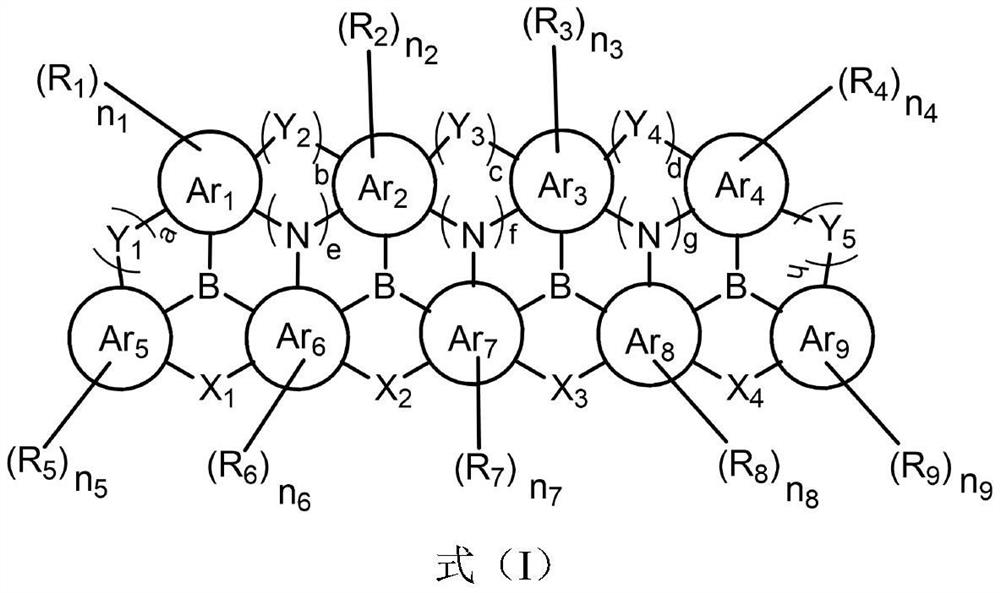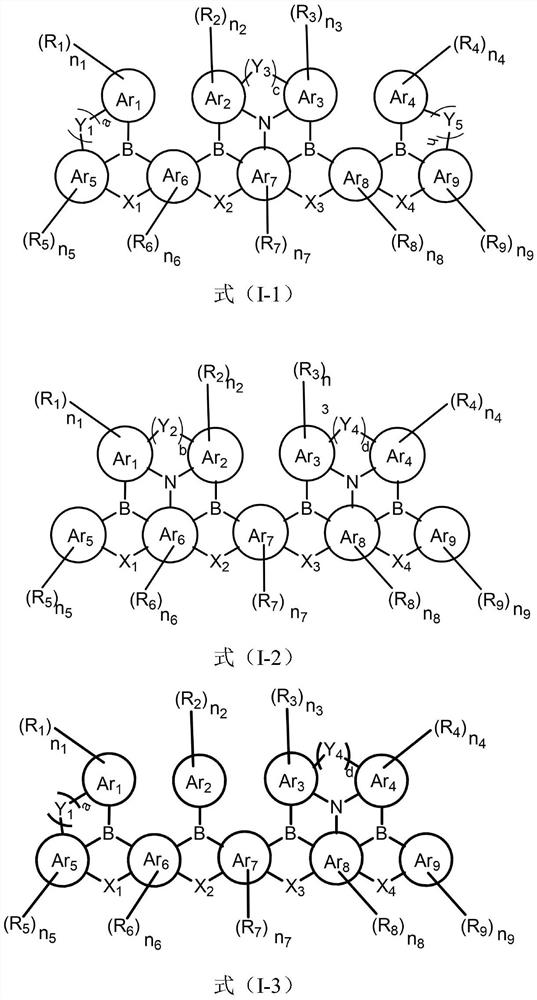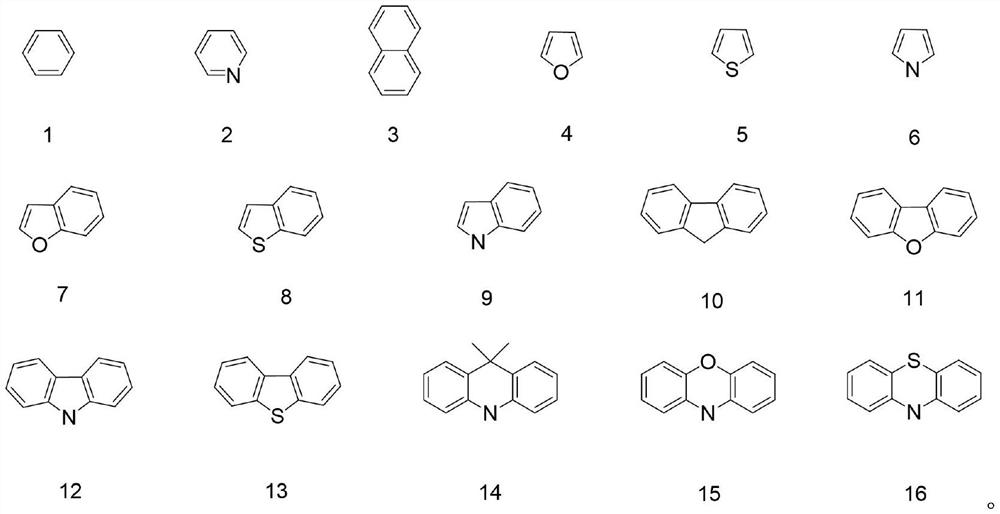Fused ring compound containing four boron atoms, preparation method thereof and electroluminescent device
A compound and boron atom technology, applied in the field of organic light-emitting materials, can solve the problems of complex device structure and reduced external quantum efficiency of the device, and achieve the effects of reducing the degree of relaxation, narrowing the half-peak width, and high external quantum efficiency of the device
- Summary
- Abstract
- Description
- Claims
- Application Information
AI Technical Summary
Problems solved by technology
Method used
Image
Examples
Embodiment 1
[0069]
[0070] Under argon atmosphere, 1-1 (10.0g, 0.032mol), two m-toluidine (4.52g, 0.027mol), tris(dibenzylideneacetone) dipalladium (0.293g, 0.32 mmol), 1,1'-binaphthyl-2,2'-bisdiphenylphosphine (BINAP, 0.300g, 0.48mmol) and sodium tert-butoxide (9.23g, 0.096mol), add 240mL of toluene and heat up to 100°C , stirred for 5 hours. After cooling to room temperature, the reaction solution was extracted with 200 mL of ether, washed three times with saturated brine (200 mL×3), the organic phases were combined, dried by adding anhydrous sodium sulfate, and the solvent was distilled off under reduced pressure, and the obtained solid was separated through a silica gel column to obtain Product 1-2 (10.7 g, yield: 78%).
[0071] Elemental analysis structure (C 20 h 17 Br 2 N): theoretical value C, 55.71; H, 3.97; N, 3.25; test value C, 55.71; H, 3.98; N, 3.25.
[0072] Matrix-assisted laser desorption ionization time-of-flight mass spectrometry (MALDI-TOF) mass spectrometry: ...
Embodiment 2
[0094]
[0095] Under argon atmosphere, 1-1 (10.0g, 0.032mol), phenoxazine (4.94g, 0.027mol), tris(dibenzylideneacetone) dipalladium (1.47g, 1.60mmol) were added to a 500mL three-necked flask ), tri-tert-butylphosphonium tetrafluoroborate (1.86g, 6.40mmol) and sodium tert-butoxide (10.4g, 0.108mol), add 210mL of toluene. The temperature was raised to 105°C, and the reaction was stirred for 3.5 hours. After cooling to room temperature, the reaction solution was extracted with 200 mL of ether, washed three times with saturated brine (200 mL×3), the organic phases were combined, dried by adding anhydrous sodium sulfate, and the solvent was distilled off under reduced pressure, and the obtained solid was separated through a silica gel column to obtain Product 2-1 (9.3 g, yield: 70%).
[0096] Elemental analysis structure (C 18 h 11 Br 2 NO): Theoretical C, 51.83; H, 2.66; N, 3.36; O, 3.84; Tested C, 51.81; H, 2.66; N, 3.35.
[0097] MALDI-TOF mass spectrum: theoretical val...
Embodiment 3
[0119]
[0120] Under argon atmosphere, 1-2 (10.0g, 0.023mol), 3,5-dimethylaniline (8.36g, 0.069mol), tris(dibenzylideneacetone) dipalladium ( 0.210g, 0.23mmol), BINAP (0.218g, 0.35mmol) and sodium tert-butoxide (6.73g, 0.070mol), add 240mL of toluene. The temperature was raised to 100°C, and the reaction was stirred for 24 hours. After cooling to room temperature, the reaction solution was extracted with 150 mL of ether, washed three times with saturated brine (200 mL×3), the organic phases were combined, dried by adding anhydrous sodium sulfate, and the solvent was distilled off under reduced pressure, and the obtained solid was separated through a silica gel column to obtain Product 3-1 (9.1 g, yield: 77%).
[0121] Elemental analysis structure (C 36 h 37 N 3 ): theoretical value C, 84.50; H, 7.29; N, 8.21; test value C, 84.48; H, 7.29; N, 8.20.
[0122] MALDI-TOF mass spectrum: theoretical value 511.3; experimental value 511.2 (M + ).
[0123] Under an argon atmo...
PUM
| Property | Measurement | Unit |
|---|---|---|
| full width at half maximum | aaaaa | aaaaa |
| thickness | aaaaa | aaaaa |
Abstract
Description
Claims
Application Information
 Login to View More
Login to View More - R&D
- Intellectual Property
- Life Sciences
- Materials
- Tech Scout
- Unparalleled Data Quality
- Higher Quality Content
- 60% Fewer Hallucinations
Browse by: Latest US Patents, China's latest patents, Technical Efficacy Thesaurus, Application Domain, Technology Topic, Popular Technical Reports.
© 2025 PatSnap. All rights reserved.Legal|Privacy policy|Modern Slavery Act Transparency Statement|Sitemap|About US| Contact US: help@patsnap.com



